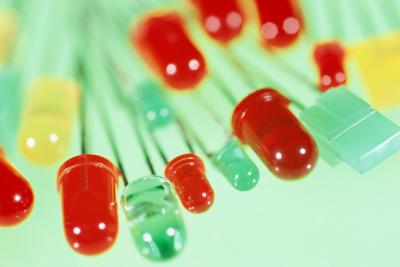
The decision to install LED headlights in your car may stem from wanting a more eco-friendly car, or the desire to save both money and electricity with a cost-effective alternative to regular headlights. Either way, as long as you have the right tools to begin the project and a little knowledge of CAD software, creating your own LED headlights will be painless and relatively quick.
Take your original headlight out of its socket. Separate the pieces and measure them individually. Depending on the kind of headlight you have, you might mount the LED array on a polycarbonate sheet or directly onto your headlight's reflector plate.
Draw a template of your new headlight array on whichever CAD software you plan to use. If you don't have CAD software, there are free trials you can use on the Internet; AllyCAD also offers an easy-to-use freeware version of their professional CAD software for personal use. (See Resources 3) Once you've determined the shape you want, plot out the number of holes you'll need--one for each LED. You also need to determine the shape of your headlight and whether it will be round, square or your own custom shape.
Print out the image. This will act as the reference point for your project so keep it handy as you work.
Drill holes in the polycarbonate sheet as they appear on the image you created. When you finish drilling, cut out the shape of the headlight itself using a precision saw or other clean-finish tool. Test the completed sheet by snapping it into place on the fixture. If it doesn't fit quite right, cut the edges again.
Set the LEDs onto the array. Solder them and solder a resistor onto the positive end. Solder the negative leads of the LEDs together then the resistor leads themselves. Finally, solder the leads of the wire onto the negative and positive outputs. Test the circuit with a battery.
Glue the backs of the LEDs onto the array plate. When the glue is dry, attach the plate to the fixture and test the set-up again with a battery.